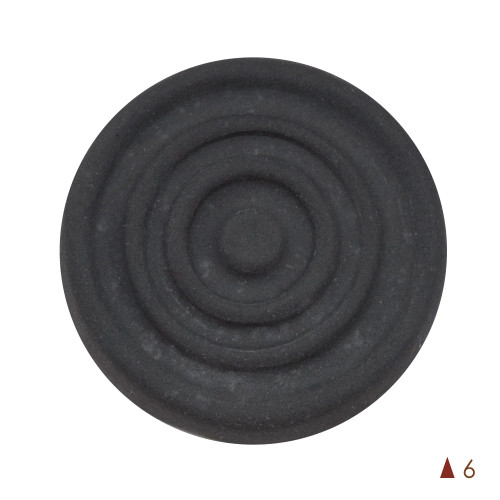This is a blend of minerals that closely simulates Barnard (Blackbird) Clay, a widely used clay that contains iron and manganese.
| Typical analysis: | |
| SiO2 | 30.37% |
| Fe2O3 | 26.27% |
| Al2O3 | 20.52% |
| MnO | 8.72% |
| K2O | 1.68% |
| CaO | 0.59% |
| MgO | 1.07% |
| TiO2 | 1.06% |
| NaO | 0.52% |
| LOI | 8.85% |
This material was developed to mimic the effects of Barnard clay when used as a wash or when used in clay body formulations. Though it can be added to glazes as a substitute material, its effects may vary from the original.
Information from the Laguna Clay Co.
High Iron Clay
Alternate Names: Blackbird Slip, Blackbird Clay, Barnard Clay
| If this formula is not unified correctly please contact us. | |||||||||||||||||||||||||||||||||||||
Barnard clay has long been used by potters as a source of iron in dark firing glazes. It offers price advantages over using iron oxide and being a clay aids in suspending the materials in the slurry. Barnard has proven valuable for iron slip glazes requiring high clay content. For example, a mixture of 90% Barnard and 20% calcium carbonate will produce a nearly black glaze around cone 9.
Published chemistries appear to be highly variable. We have seen iron amounts as low as 14% and as high as 34% (the other oxides are likewise variable).
Barnard clay is a silty material with very low plasticity; so low that it is difficult to form test specimens from it in the plastic state (yet the drying shrinkage is around 4%!). The material is extremely messy to work with and stains containers and everything it touches. There is some variation in the color (and thus of the fired results of glazes and slips employing it).
Fired bars are very dark brown at cone 04 proceeding to black at cone 3 (by cone 6 it is beginning to melt). Cone 04 porosity is around 10% but drops sharply to 2% by cone 2 and to near zero by cone 4 (higher firing begins to expand test bars). Fired shrinkage is very high at all temperatures (above 10% even at cone 04).
To duplicate this material the base clay needs to have low plasticity and be high in iron and silica and low in alumina and flux. Since iron oxide and silica need to be added flux containing clays could possibly be diluted enough to work. If you would like more information please email us and we can give you trial recipes in return for your reports on their testing.
We used to quote the following analysis, but have changed it as a result of fired tests.
CaO - 0.6
MgO - 0.7
K2O - 1.1
Na2O - 0.6
TiO2 - 0.2
Al2O3 - 7.6
SiO2 - 47
Fe2O3 - 33.9
LOI - 8.3
The nature of the color demonstrates that the material must have a significant amount of MnO (Ron Roy quoted this on Clayart). We will do some testing with varying amounts of iron and manganese to adjust this further if necessary.
Information from the Digitalfire Ceramic Materials Database







